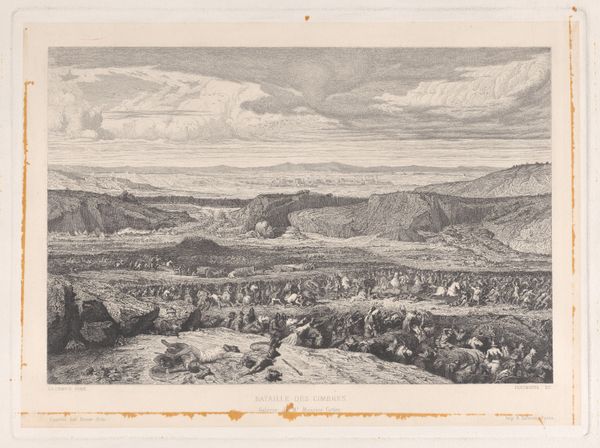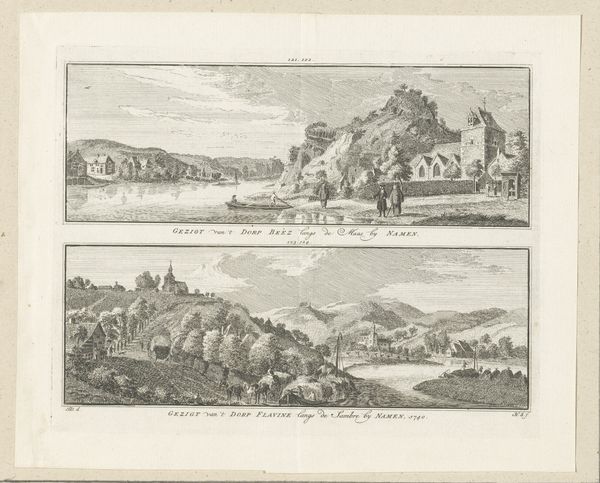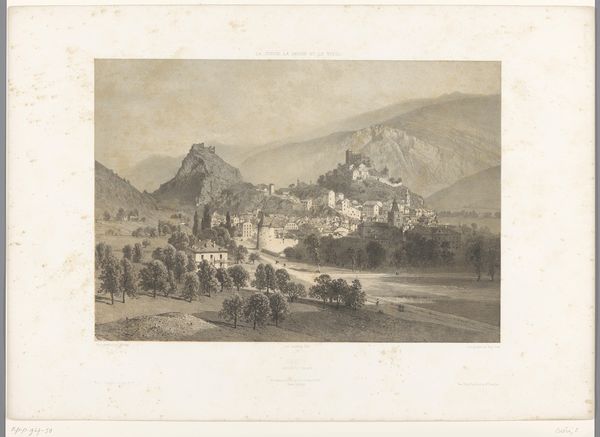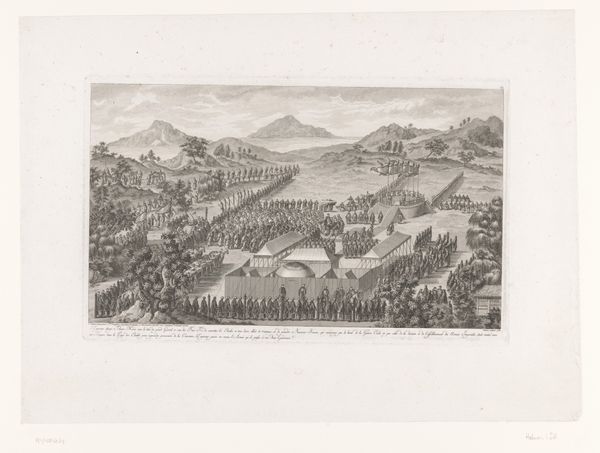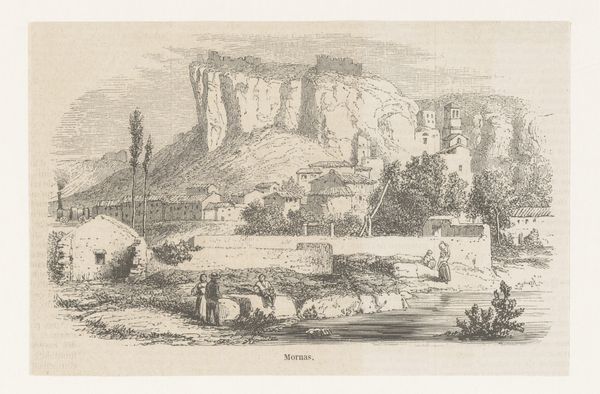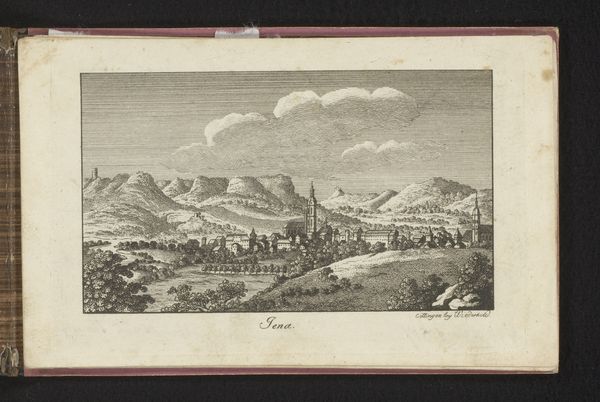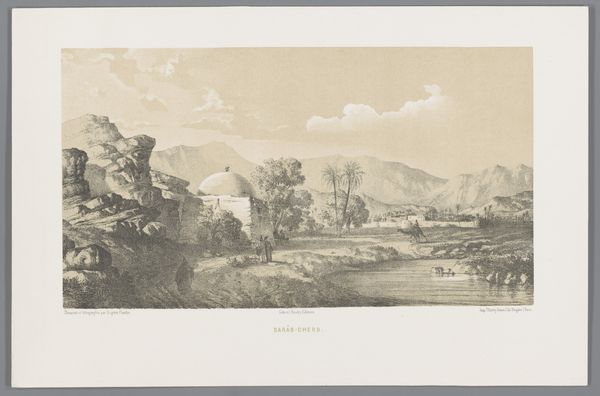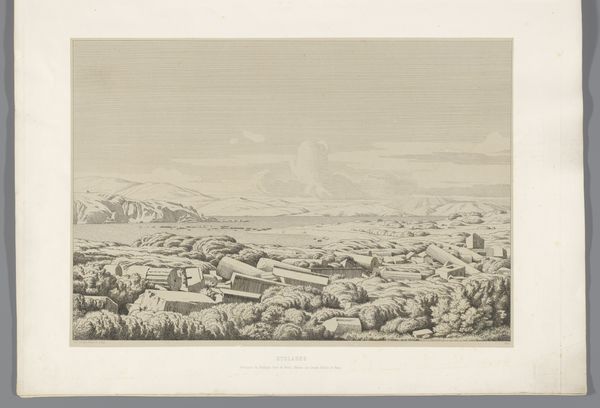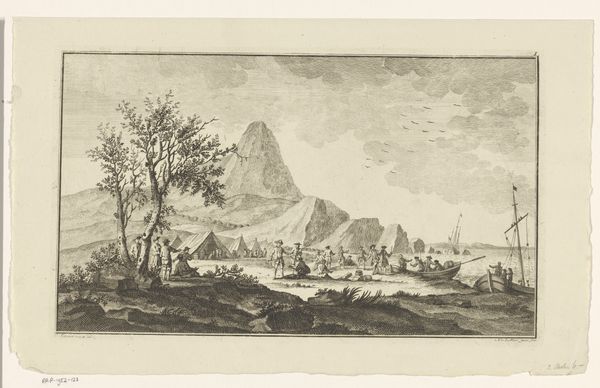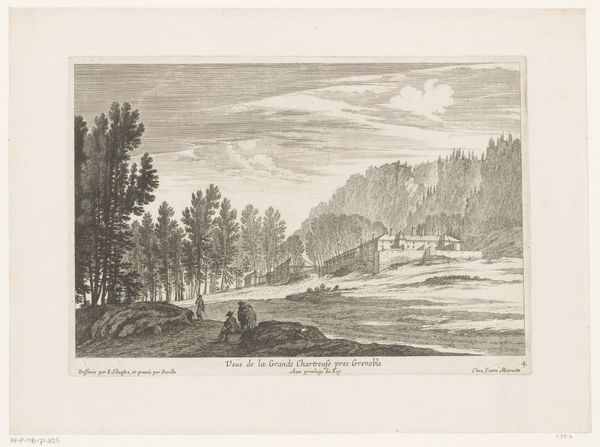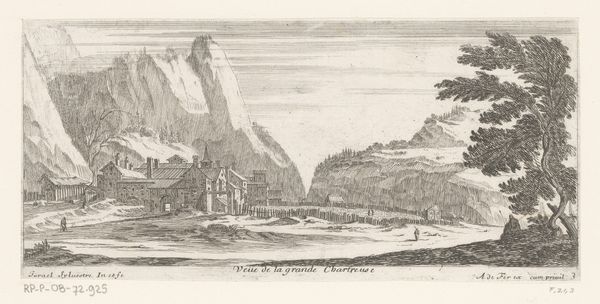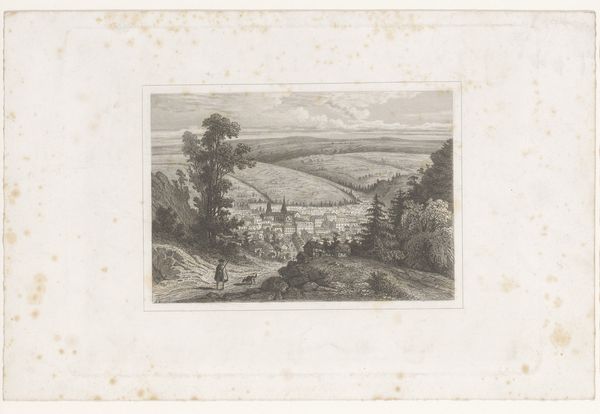
Dimensions: height 98 mm, width 254 mm
Copyright: Rijks Museum: Open Domain
Editor: So, this engraving from 1856 is entitled “Gezicht op Divonne en de baden,” a landscape of Divonne. It feels very…Romantic, almost staged. There's something serene but also a bit unsettling about the distance. What do you see in this piece, beyond just the scenery? Curator: The imagery immediately pulls me toward the notion of cultural memory and continuity. Consider the bathhouses themselves, often symbolic of cleansing, healing, even transformation across cultures. Yet, placing it within the vastness of nature evokes a contemplation of humanity's small place within a grander scheme. Does the deliberate staging suggest an idealized vision, a desire to capture a moment in time and hold onto it? Editor: That's interesting - this desire to hold onto a specific moment. Do you see a potential link between the landscape and, let's say, the mental or emotional state the image intends to trigger? Curator: Precisely. Landscapes in art are rarely just geographical representations. They reflect inner landscapes too. The journey motif, for instance—these figures on horseback could be embarking on a physical journey to healing, echoing an inner emotional quest. How do you feel about the relationship between those travellers, the buildings, and the mountains? Editor: I notice that they're placed sort of... intentionally. The contrast suggests scale, maybe? Makes me think more about Romanticism as an ideology. I hadn't quite considered the 'cultural memory' of the spas and the act of traveling itself. Curator: Indeed. So much resides beneath the surface of an image! Understanding its symbols allows a richer connection. Editor: Thanks, I will look at other art with what I have learnt here today!
Comments
No comments
Be the first to comment and join the conversation on the ultimate creative platform.
